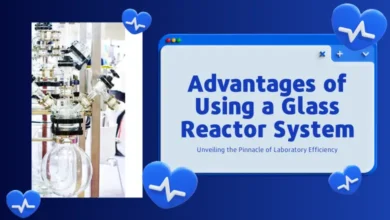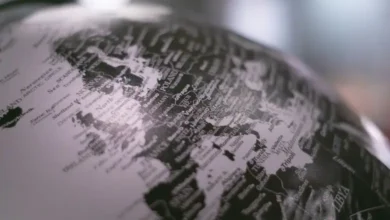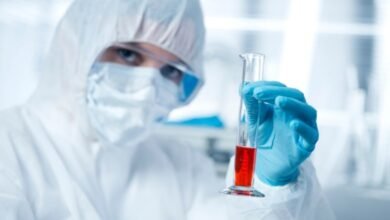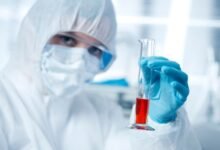Top Ten Must-Have Laboratory Supplies You Need for Success
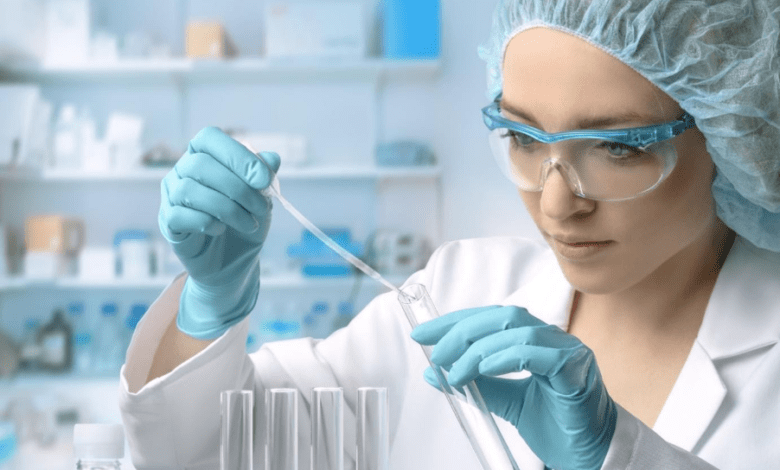
Are you looking to outfit a brand new laboratory? Maybe you are a science-from-home enthusiast looking to experiment for fun.
Or maybe you are a teacher looking to revamp your school’s current lab rooms. You could even be a small business owner, looking to formulate your own products rather than having to rely on what’s currently available.
Whatever your situation, there are a handful of laboratory supplies you are going to need no matter what. Each lab is going to differ based on the goals and needs of the facility, leading to specialized equipment.
But if you are looking for effective and safe experimentation, these are the top 10 foundational chemical and laboratory supplies you are going to need no matter what.
1. Safety Equipment
When it comes to any type of lab, whether in a school, business, or home environment, safety needs to be the first concern. Experimenting with chemicals, heat, and glassware can be potentially dangerous, especially when you have little to no experience.
You’ll need two types of safety equipment; personal protective equipment (PPE), and facility safety equipment.
Personal Protective Equipment
The first supplies you need to invest in our safety supplies. You’ll want to have high-quality, laboratory goggles to protect your eyes from chemicals and debris. A face shield also helps in the event of a splash or burst.
You’ll want durable, fitting lab coats. These will protect your clothes from getting ruined. Make sure they aren’t too loose, or excess fabric may knock supplies or substances over. A specialized apron over top of your coat is ideal when working with stronger chemicals.
You may also want earplugs or personal respirators as well.
Gloves are a must to keep your hands safe. Different types are available depending on the current experiment and you can get these when you visit PlastCare USA.
You can complete most general lab work with simple, inexpensive nitrile gloves. Nitrile gloves provide general chemical resistance.
Kevlar gloves are necessary when cutting is a frequent task in your lab. They function as chainmail on your hands, preventing a slipping blade from cutting your hand.
Use neoprene gloves to protect against stronger acids. They also provide additional grip.
If you work with a lot of gases in your lab, get some butyl gloves. These contain a super tight molecular structure that prevents gases from penetrating.
Facility Protective Equipment
Even with the use of face shields and goggles, there is always a chance something can get into your eyes. If that happens, it helps to have an eye washing station to provide immediate relief, helping remove substances before they can cause much damage.
Since broken glass is a natural side effect of any lab testing, you’ll want a safe way to dispose of it. Never place the broken glass into a trash bag. This can be dangerous when someone goes to empty the trash, as the glass can poke right through the thin bag.
Instead, you’ll need to have a broken glass bin. These are usually made of hard plastic and are clearly labeled to contain glass, protecting people and preventing liability.
Last but not least, make sure to conduct experiments in a location with an effective fume hood. If a current hood doesn’t exist, you’ll want to install one.
The air in your lab needs to be pure in order to provide a safe place to breathe. Chemicals, as well as fires and burners, can make the air unsafe to breathe.
2. Weighing Equipment
You can’t run effective experiments without being able to weigh compounds and ingredients. You’ll want to get a laboratory-grade scale that provides instant digital readings. It helps if the scales are waterproof since spills occur frequently during the weighing process.
You’ll also want to get weighing bowls and dishes that make it easy and convenient to weigh either liquids or solids. To weigh liquids, you’ll want beakers or bowls that have a pour spout.
To weigh solid objects, a weighing dish can hold a large amount of material.
3. Measuring Equipment
On top of measuring weight, you’ll also need supplies to measure volume. If you are creating lab reports and trying to perfect a process, it’s crucial that your measurements are as accurate as possible, so that you can make minute adjustments as needed.
Laboratory-grade measuring cups, beakers, and bowls will make your job of measuring volume a breeze.
4. Heaters and Burners
One of the most common tasks that take place in labs of any kind is the act of heating substances up. This could be liquids, solids, or gases.
A variety of heating equipment is available depending on your specific needs. Some provide an open-flame, which is only conducive to certain types of containers. Others heat without using a flame.
One of the most simple and most common types of burners is the hot plate. These are basically just electric stoves. You can place various materials, such as pots, beakers, or flasks. Hot plates are easy to control the heat setting, allowing for rapid or slow heating.
Another common method of laboratory heating is by affixing a test tube or beaker over an open flame from a bunsen burner. If you remember high school chemistry class, you probably used a bunsen burner all the time.
These make it easy to heat the tiniest amounts of a substance when place in a test tube. Flame size and distance from the flame can dictate the speed of heating.
5. Glassware
Glassware is everywhere in laboratories, and all of it is useful in its own way, especially when it comes to laboratory glassware. Some of the most common glass supplies you’ll reach for in your lab include test tubes, beakers, flasks, and graduated cylinders. These essential tools play a crucial role in various scientific experiments and analyses, contributing to the precision and accuracy of measurements in your laboratory work.
Some of these pieces of glassware are for storing compounds. Some are for mixing multiple compounds together.
And many of these items are for heating substances up. Most glassware used in a laboratory is made of borosilicate glass, which can withstand high temperatures without the risk of shattering. You can’t just use any type of glassware on an open flame, so be sure to consult your owner’s manual before doing so.
Along with the glassware itself, there’s a variety of additional supplies used in conjunction. You’ll want stir sticks, often made of glass as well to withstand heat.
You’ll want thermometers to track the temperature of every substance. You’ll use pipets to add liquids one drop at a time; crucial during intricate experiments. Funnels are important when adding larger amounts of liquids to a mixture.
6. Refrigeration
While there is a lot of heating going on inside a lab, there is also a need to keep things cool. You should always have a laboratory or commercial-grade refrigerator and freezer in your lab. Some labs may require a walk-in cooler as well.
You’ll need to store many substances, specimens, and chemicals at low, and sometimes very low, temperatures to ensure stability and usefulness. Your typical residential freezer likely can’t handle the temperatures necessary for lab work.
Oftentimes, experiments require specimens to wait for long periods of time, depending on the variables being tested. This typically has to take place in a cool, temperature-controlled environment.
It’s also very useful to have ice and cold water ready to go at a moment’s notice. Both are crucial when needing to cool down a mixture or experiment.
7. Cleaning Supplies
Labs can get messy. Chemical spills, broken glass, and even mild explosions aren’t uncommon when researchers are at work. Pacific Science, LLC is a supplier of cold chain solutions that include lab equipment services and ongoing support.
Having a dedicated cleaning kit is mandatory for any type of lab work. And there’s a lot that goes into a lab cleaning kit.
You’ll want to have various types of lab cleaning wipes. Some are gentle enough to be used on delicate items, such as small glassware or other fragile items. Other lab cleaning wipes are general purpose and can be used to wipe down everything from tables to chairs, floors, scales, and more.
For all-purpose wiping, make sure to have a stockpile of microfiber towels. The structure of microfiber far outperforms and other types of fabric for cleaning purposes. It’s absorbent and dries quickly. Plus, it doesn’t leave any lint behind, which is important for glassware.
To clean glassware, you’ll want to have multiple sizes of soft-bristled brushes, capable of getting into narrow openings and reaching the bottoms of long bottles and tubes.
After washing, you’ll want to use a laboratory drying rack or an electric warm air dryer. Drying racks are slanted with multiple pegs sticking out, allowing you to hang tubes and beakers upside down to drip out and dry.
Warm air dryers blow warm air up into inverted glassware to dry quickly. This gets them ready for reuse right away.
8. Microscopes
Much of what is done in a lab concerns specimens that are very small, often too small to see with the naked eye. This is where microscopes become critical. They allow you to examine the cellular structures of many types of specimens, from bacteria and germs to organs and other substances.
Multiple types of microscopes are available, depending on how small the specimens you need to view are. The most common types of microscopes are optical, or light microscopes.
These shine light through the specimen and magnify the image. What you see is the actual specimen.
The other common type of microscope is the electron microscope. These send beams of electrons to the specimen. They then create an image that shows the structure of the smaller microorganisms.
9. SARMs
SARMs, or selective androgen receptor modulators, are a type of androgen receptor ligands. They work similarly to steroids, but without the risk of negative side effects, or the bad social connotation.
They work to target specific functions that are important to athletes when recovering from workouts. They help to build muscle mass, boost strength, and enhance overall athletic performance.
To experiment with various SARMs, the best way is to buy them is online as research chemicals. But when shopping online, you’ll want to purchase from a reputable, transparent SARM source.
You want detailed reports on each and every compound you buy to ensure you know what you are getting, and how it’s going to contribute to your end goal.
Wondering where to buy SARMs? You can visit the Chemyo SARMs website to browse a wide selection of high-quality SARMs for sale.
10. Chemicals
You’ll also want some basic chemicals and other compounds for research and experimentation purposes.
Hydrogen peroxide is a common lab chemical, as well as a household product. In the lab, it’s used as a strong oxidizer. As such, you’ll see hydrogen peroxide used in countless experiments, in the classroom, or in the research center.
Hydrochloric acid is a colorless solution used widely in industrial environments. It is highly corrosive and poisonous, so ensure precautions are taken when using it.
Sulphuric acid retains heat very well. In fact, the surface of the planet Venus is made of sulphuric acid.
Acetic acid is very helpful in the lab. You can purchase it individually. It’s also found in vinegar, though not in its pure form. Water will need to be removed from vinegar in order to get our acetic acid.
Acetone is another widely used chemical that is easy to buy at your local hardware store. It’s used as a general solvent or as a final rinse after washing glassware.
Another commonly found chemical, Ammonia is usually found in household window cleaners. It can be used to react with many different acids in order to create salts.
Other basic chemicals to stock up in your lab include aluminum oxide, barium carbonate, calcium carbonate, calcium chloride, and others.
Invest in the Best Laboratory Supplies
If you are looking to set up a proper lab that actually yields interesting results, it’s all about the equipment used. It’s very hard to conduct experiments without having the right laboratory supplies.
It can also be very dangerous to conduct experiments without having the right safety and cleaning supplies. Unless you want to risk burns, cuts, dangerous fumes, and other lab hazards, you need the right gear before you even start experimenting.
And you don’t want to buy the cheapest supplies available. These will produce the poorest results and will break much quicker. Invest up front and you’ll reap the rewards later.
Looking for more helpful articles like this? Check out the rest of our blog today.
Also, if you want to buy nitrile gloves online, visit Primo Dental Products today.

